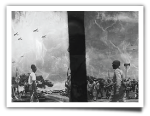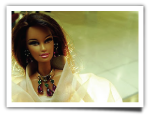If you happened to be in Manila Bay on the morning of October 6 and you spotted a 17th century ship sailing towards the shore, do not panic. Ghost pirates are not attacking. You are looking at the famed Manila Galleon, grand ships built in Manila during the Spanish colonial times. After a century and half of being absent, it is coming home in the form of a working replica christened, “Andalucía”. This replica was built late last year as part of the Dia Del Galeon Festival and it’s travelled from Spain to China and now to the Philippines using the power of the wind, two emergency diesel engines, and minimal navigation and communications technology.
The Manila galleons were the world’s first supersized malls. The largest ships of their time, they were once laden with the treasures from Southeast Asia, China, India, and Arabia. They carried goods like porcelain wares, silks, spices, jades, jewels and luxury items to Mexico and the rest of the Americas and even Europe. When the ships came back from Mexico, it brought home chests filled with the Spanish Dollar or silver pieces of 8, the first world currency. The galleons allowed for the lucrative Manila-Acapulco trade to thrive from 1565-1815.
These giants of the seas voyaged once or twice a year serving primarily as vessels for exchanging goods but it also transported the cultural cargo of two Spanish colonies, eventually paving the way for a global exchange. Here are some quirky trivia you may not have known about the Filipino Mexican connection:
- Mexicans gave Filipinos words like “tatay” and “nanay” from their own “tata” and “nana” meaning father and mother. Filipinos gave them the words “palay” and “palapa.” Palapa is coconut frond in Filipino while in Mexico; “palapa” is a beach hut.
- In Mexico, a clan with the last name “Maganda” has resided for more than 2 centuries. People from their area have the habit of drinking sap of a coconut which they call “tuba”.
- The town of Mexico, Pampanga was originally named Masicu because of the abundance of chico that grew there. But the Mexican emigrants who settled there renamed it.
- The Philippines got a taste of Mexico’s through culinary flavors like sampaloc, achuete, and tsokolate batirol. Filipinos added sugar, groundnuts, or milk making for their own version of the Aztec drink
- 80% of the crew on the galleons was Filipino. Perhaps it was due to the Manila-Acapulco trade that the Philippines developed an enduring relationship with the sea and shipbuilding. Filipinos are currently the most sought after seafarers making up 1 out of 3 seamen in the world.
Learn more at the exhibit “Connecting Continents: The Filipino in the Galleon” at the Senate Building and by boarding the Galleon Andalucía at Pier 13, South Harbor, Manila from October 6-9. Open from 9:00 am to 5:00 pm. Admission is free. These events are part of the Dia Del Galeon Festival organized by UNESCO, NCCA, and the office of Senator Angara. For more information contact: Ms. Charisse Aquino-Tugade (632) 527 2192 local 616 or email diadelgaleon@yahoo.com.






